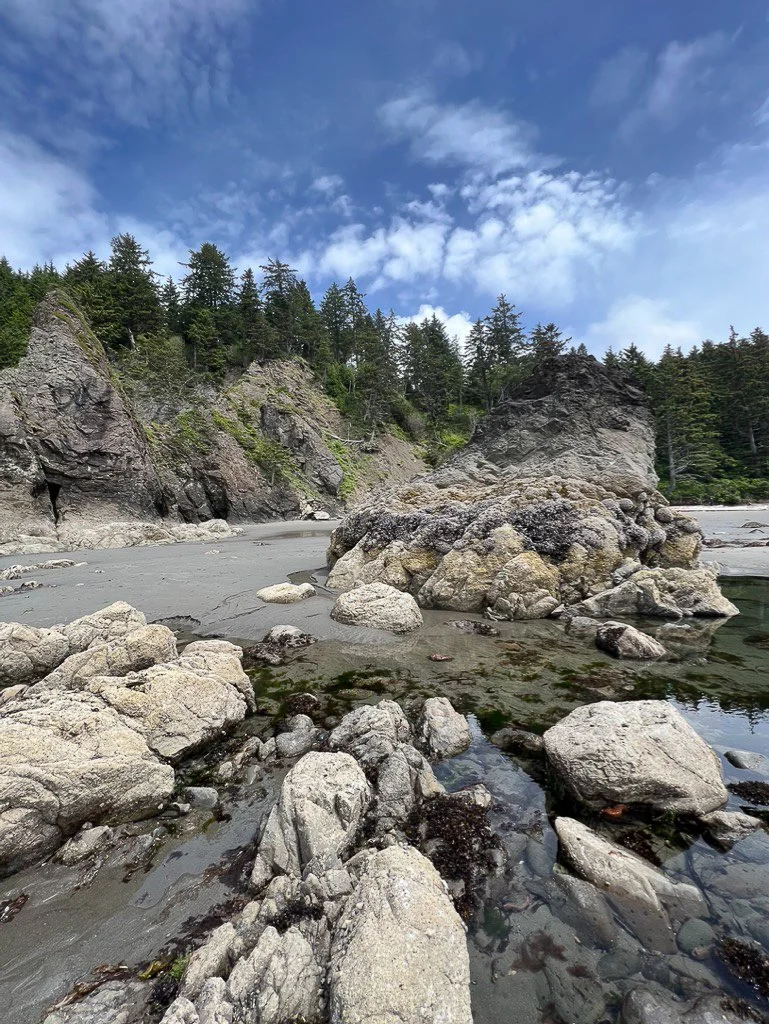A Guide to Visiting Olympic National Park
About Olympic National Park
On Washington State's Olympic Peninsula, Olympic National Park sprawls across several different ecosystems. The Olympic Mountains offer dramatic, glaciated alpine peaks while the coastlines and rainforests of the park are are temperate and lush.
There are four temperate rainforests on the Olympic Peninsula; among them, The Hoh Rainforest, has been deemed a World Heritage Site and a Biosphere Reserve by UNESCO.
The coastlines and rivers of the Olympic Peninsula support some of the most extensive runs of wild salmon and trout remaining in the Pacific Northwest.
The park is home to world-class fishing, hiking, backpacking, climbing, and offers endless adventures.
Lodging
Lake Crescent Lodge (pictured) was built in 1915 and is a great basecamp for adventuring aroud Olympic National Park. The lodge overlooks the stunning Lake Crescent and offers an in-house bar and restaurant.
Port Angeles Inn offers a view of the water and Canada. This hotel is about 30 minutes outside of the park.
Sol Duc Hot Springs Resort offers three Mineral Hot Spring soaking pools, rooms and cabins, and an on-site restaurant and camp store.
Backcountry and Camping Permits
Covering nearly one million acres, Olympic National Park encompasses three distinct ecosystems—glaciated mountains, rugged Pacific coastline, and lush temperate rain forests.
Each of these ecosystems require different preparedness and gear. Plan accordingly.
Backcountry and camp permits are available via Recreation.gov.
Olympic First Nations
Eight Olympic Peninsula First Nation have traditional associations with Olympic National Park based on origin, land use, and culture.
The Quileute First Nation Reservation lies along the Northern Coastline of the park.
Seasons in Olympic National Park
Given the ecological variation of Olympic National Park, it is possible to experience weather related to all four seasons within a single day.
Because this park consists of rainforest, coast, and mountains combined, it is advised to always be wearing rain gear, or have it close on hand. Always check conditions in advance and plan accordingly.
Winter – Seasonal rain and snow are expected, but the park is more empty than usual and offers more opportunities of solitude. Some roads/hikes may be inaccessible due to the snow or weather. Check conditions in advance and plan accordingly.
Spring – This season is great for visiting, as the weather starts getting warmer and the summer crowds have not yet arrived.
Summer – Summer offers great weather in the park as it’s generally sunny and warm. However, summertime is also the most busy.
Fall – The weather is starting to change as well as the gorgeous foliage.
Best Hikes in Olympic National Park
Hurricane Hill
Sol Duc Falls Trail
Marymere Falls
Second Beach
Klahhne Ridge Trail and Sunrise Point
Mount Ellinor
Mount Storm King
East Fork Quinault River Trail
Rial to Beach to Hole in the Wall
High Divide and Seven Lakes Basin
Sol Duc Hot Springs and Resort
Sol Duc Hot Springs offers three Mineral Hot Spring soaking pools and one Freshwater Pool.
The spring water comes from rain and melting snow, which seeps through cracks in the sedimentary rocks where it mingles with gasses coming from cooling volcanic rocks.
The resort offers rooms and cabins, a restaurant, and camp store.






